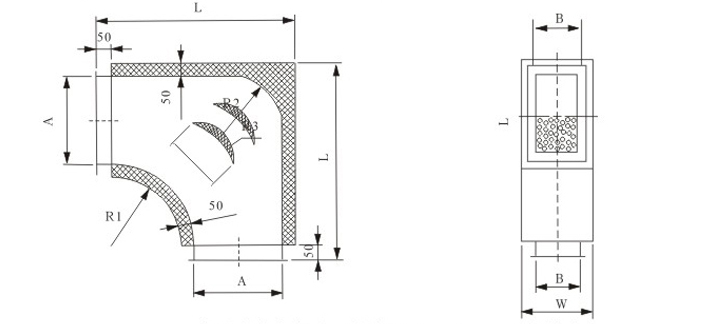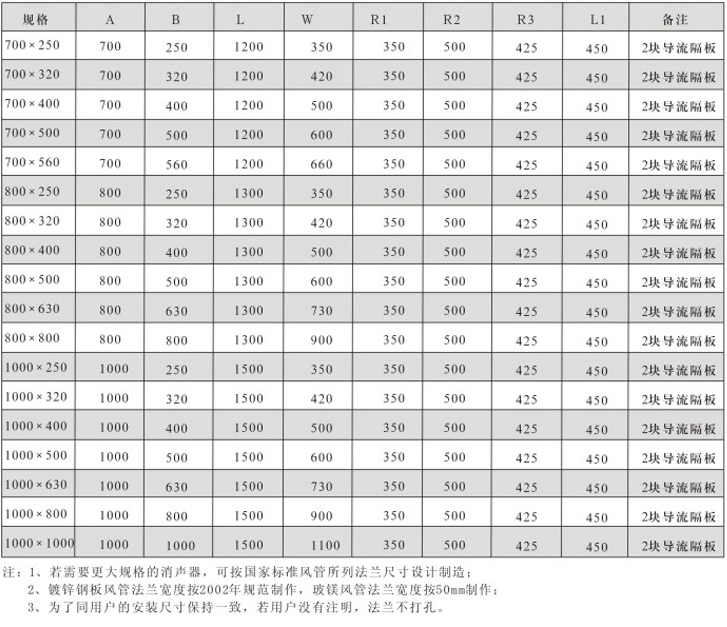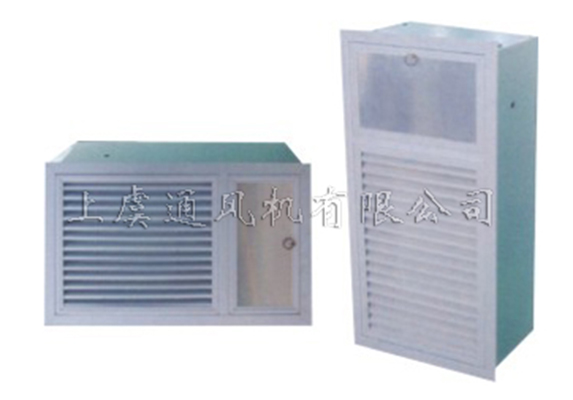
Product Specifications
Features: It is composed of aluminum alloy air outlet panels and smoke exhaust fire dampers, normally open or in a normally closed state, manufactured according to user requirements.
Uses: It is installed at the inlet and outlet of the air supply and exhaust vents in the ventilation, air conditioning and smoke exhaust systems with fire protection requirements, and can be installed vertically or horizontally.
Scope of Application diameter: According to GB50045-95, smoke exhaust outlets shall be installed on the smoke exhaust systems of walkways, smoke-proof lobbies, and windowless rooms, while air supply outlets shall be installed in smoke-proof lobbies and elevator walkways, remaining normally closed in normal conditions.
The external structures of smoke exhaust outlets and air supply outlets are identical, with two installation forms: vertical and horizontal.
Product Parameters and Description
Mufflers are one of the effective measures to reduce aerodynamic noise, which is a common noise pollution source in ventilation and air conditioning equipment. Installing a muffler can reduce noise pollution. A muffler is a device that allows airflow to pass through smoothly while effectively blocking or weakening the outward propagation of sound energy. Mufflers should meet the following 5 requirements:
Acoustic Performance Requirements: They should have good sound absorption characteristics, with sufficiently large noise reduction in the required frequency range under specific working conditions (such as flow velocity, temperature, humidity, pressure, etc.), or meet the noise reduction needs across a wide frequency range.
Aerodynamic Performance Requirements: Mufflers should impose low resistance on airflow, with a low resistance coefficient, and generate minimal re-radiated noise when airflow passes through. They should not affect the normal operation of aerodynamic equipment.
Structural Performance Requirements: Mufflers should be small in size, light in weight, simple in structure, and easy to process, install, and maintain.
Appearance and Decoration Requirements: Mufflers should have a beautiful and generous appearance, with dimensions and shapes meeting the constraints of overall equipment layout.
Comprehensive Requirements: Mufflers should be cost-effective and have a long service life. When selecting a muffler, comprehensive analysis and evaluation should be conducted to coordinate various requirements and determine the optimal solution.
The installation of mufflers should meet the following requirements:
Firm Interface Connection: Mufflers installed on noise-reduction equipment or pipelines must be firmly connected. Heavier mufflers should be supported by special load-bearing frames, with attention paid to the strength and rigidity of the supports.
Prevention of External Noise Infiltration: Noise radiated from the casing or pipelines of noise-reduction equipment may penetrate to the rear end of the muffler, reducing its noise reduction effect. If necessary, sound insulation treatment can be applied to the muffler casing or part of the pipeline. In air conditioning systems, mufflers should be installed as close as possible to the usage area, and exhaust mufflers should be placed in sections with balanced airflow.
Installation Environment Precautions: Mufflers used outdoors should be equipped with rain covers, and those in dusty environments should be fitted with filters. For general ventilation mufflers, the dust content of the gas passing through should be lower than 150mg/m³. Gases containing water mist, oil fumes, or corrosive components are not allowed to pass through.
The ZT100-type muffler is a relatively new noise reduction product, mainly used for noise control in various ventilation and air conditioning systems to effectively reduce aerodynamic noise. It features a wide applicable air volume range, a full series of specifications, good compatibility with standard air ducts, high noise reduction efficiency, low airflow resistance, and resistance to fire, moisture, mildew, and moth. It is particularly suitable for noise reduction in ventilation and air conditioning systems of large public buildings, such as broadcasting and television buildings, cinemas, conference halls, hotels, restaurants, shopping malls, office buildings, and high-end residences, as well as in ventilation and air conditioning systems of industrial enterprises.
The ZP100-type muffler series includes 49 different specifications, suitable for air volumes of 720–90000 m³/h, with a noise reduction of 15 dB(A)/m and a pressure loss of 14–55 Pa. The muffler blades are 100 mm thick, and the effective length of a single section is 1000 mm. According to noise reduction requirements and on-site installation conditions, multiple sections can be connected in series for use.


The ZG-type resistive tube muffler is generally installed at the inlet and outlet of fans to reduce noise generated during fan operation. As a resistive muffler, it is available in two types: circular and square. The inner wall is made of galvanized perforated plates, with the interlayer filled with superfine glass wool as the sound-absorbing material, and the surface layer is glass fiber cloth. The galvanized perforated plates form resistive sound-absorbing vanes. This product features low airflow resistance and excellent sound absorption performance. When the cross-section of the square muffler is ≥630×630 mm, resistive sound-absorbing vanes should be appropriately added.
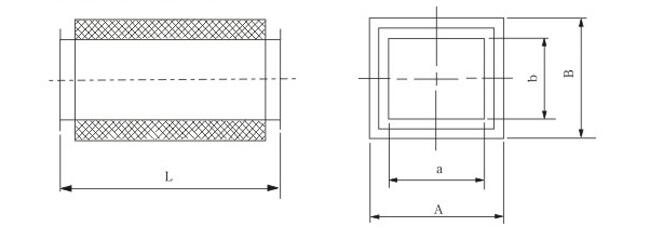
Note: The length of the muffler can be customized according to user requirements. When placing an order, please specify whether it is the total length or the effective length.
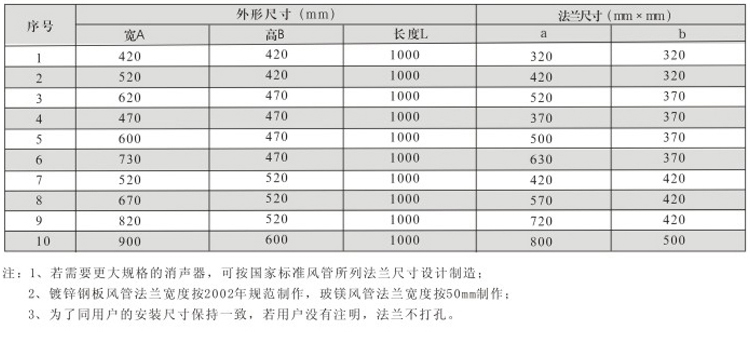

Note: The length L of the muffler can be manufactured according to user requirements.
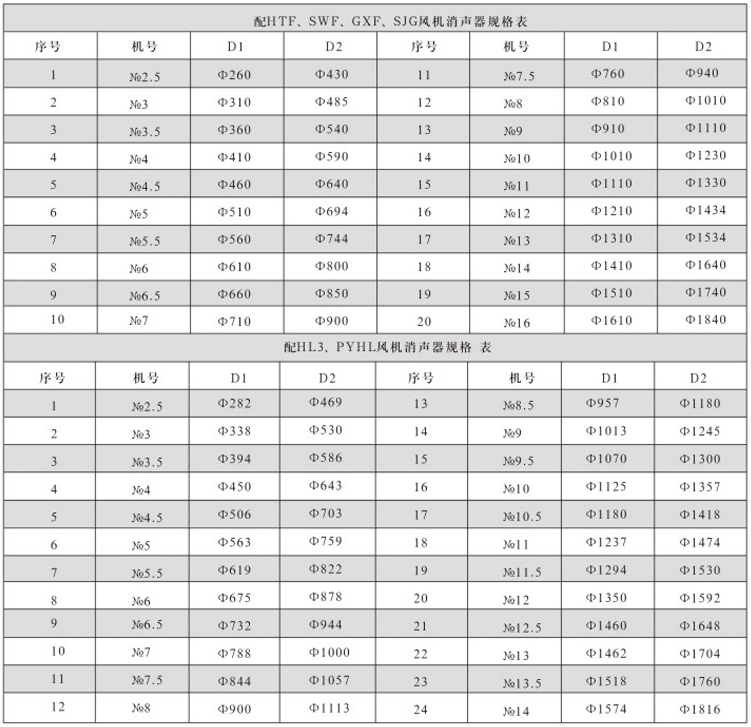
The T701-6 muffler is an impedance composite muffler. Resistive noise reduction is achieved by sound-absorbing vanes with a skeleton filled with superfine glass wool as the sound-absorbing material; reactive noise reduction is realized through the abrupt change (discontinuity) of the inner pipe cross-section and the expansion chambers between the inner and outer pipes. The muffler casing is rectangular.
This series of mufflers has 10 specifications. Specifications 1-4 have a length of 1600 mm per section, with three expansion chambers in series; specifications 5-10 have a length of 900 mm per section, with two expansion chambers in series. It is suitable for air volumes of 2000–60000 m³/h, air speeds of 6–12 m/s, with low-frequency noise reduction of 10–15 dB/m, medium-frequency noise reduction of 15–25 dB/m, and high-frequency noise reduction of 25–30 dB/m.
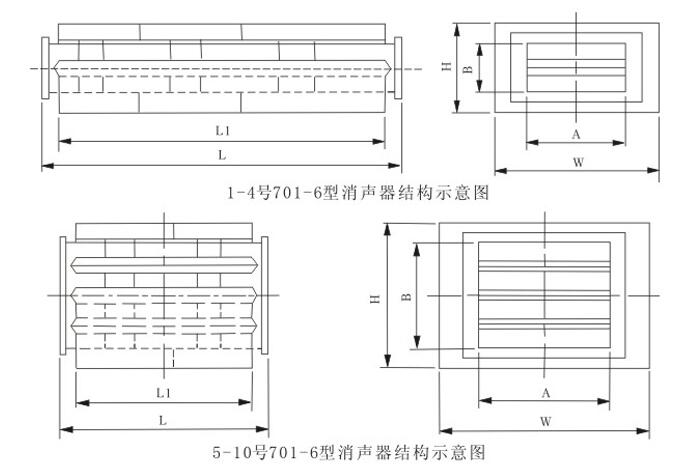
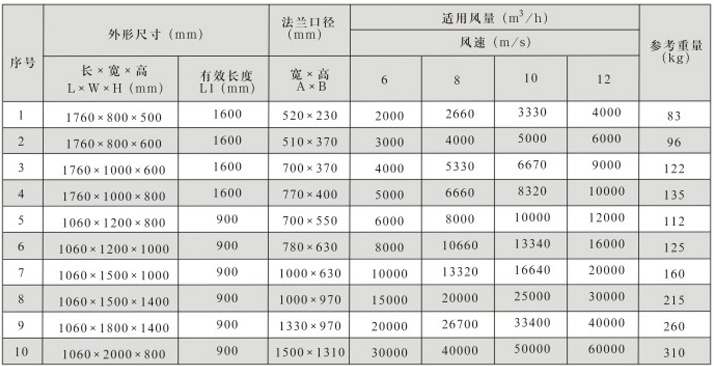
The WX-type microperforated panel muffler features a dual-chamber structure, with a wide absorption frequency band. Its noise reduction across all frequency bands is relatively flat and has a large noise reduction amount, especially showing significant noise reduction effect in the low-frequency range, which is superior to impedance composite mufflers using fibrous sound-absorbing material structures.
The connection flange diameters of this series of mufflers are designed according to the national general ventilation duct specifications (square, rectangular, circular) to form corresponding supporting series. The effective length is generally 2000 mm, but it can also be produced according to user requirements. As per noise reduction requirements, multiple sections can be connected in series. The airflow velocity through the muffler is generally ≤15 m/s.
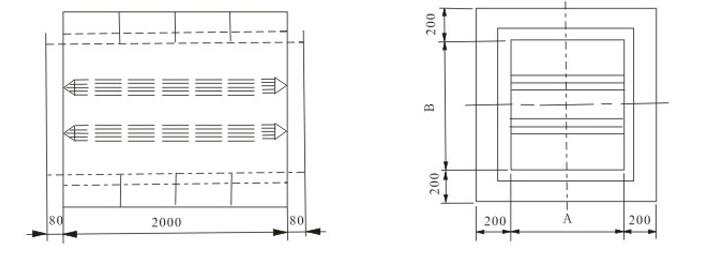
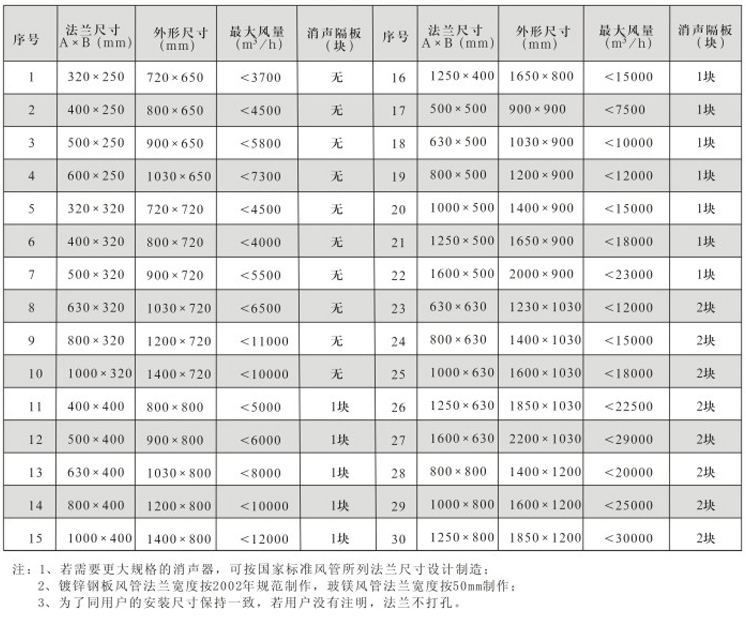
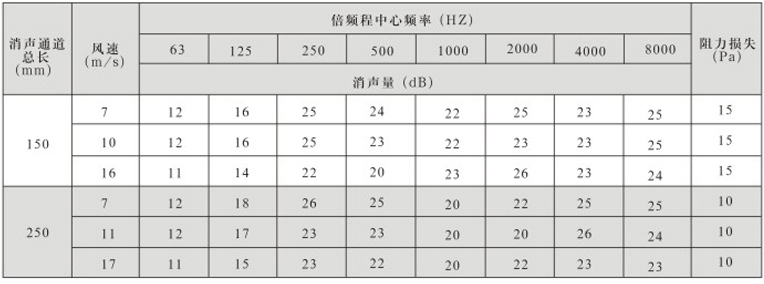
Using a muffling elbow is a simple and effective noise reduction measure. It can not only change the propagation direction of air but also make the layout of fans and air ducts more flexible and reasonable. Muffling elbows can be installed horizontally or vertically. For larger elbows, flow deflectors are added. On the premise of ensuring aerodynamic performance, the duct is formed into a right-angle inner arc muffling elbow.
Muffling elbows are mainly suitable for noise control in various ventilation and air conditioning systems, featuring a wide applicable air volume range, a full series of specifications, and good compatibility with standard air ducts. They are characterized by excellent sound absorption performance, low airflow resistance, and convenient installation.
1. Horizontal muffling elbow (long side: 200-400 mm)
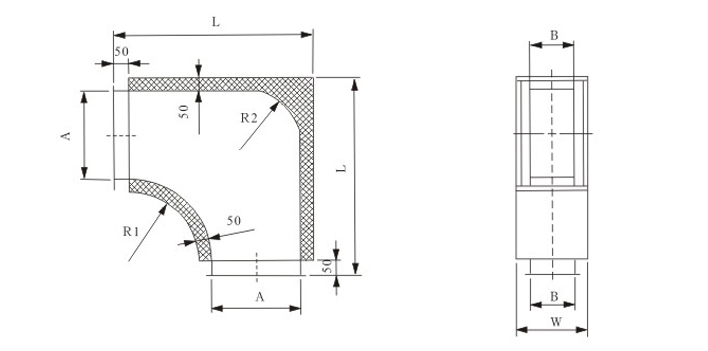
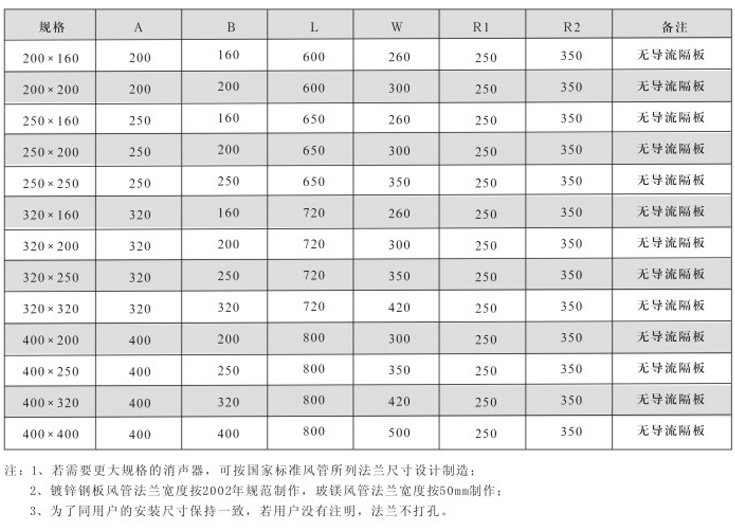
2. Horizontal muffling elbow (long side: 500-630 mm)

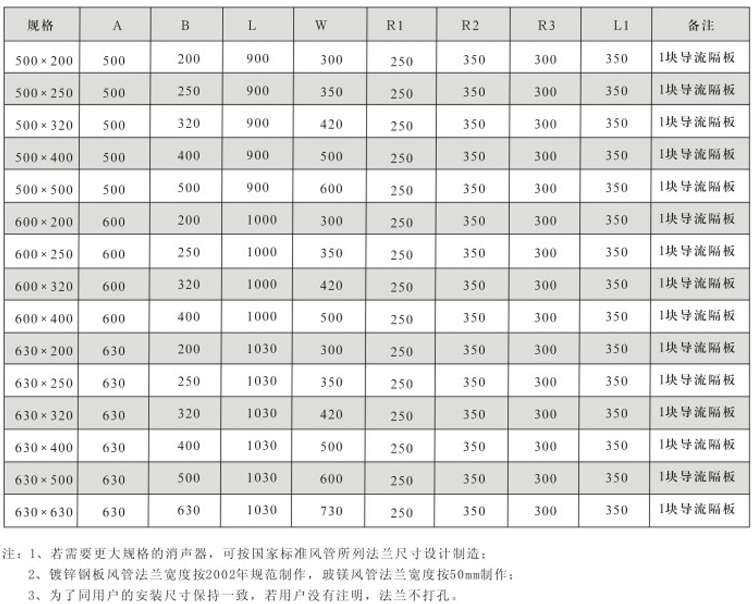
3. Horizontal muffling elbow (long side: 700-1000 mm) (those with a long side over 1000 mm shall be deduced by analogy)
